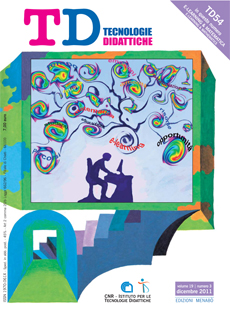The potenzial of e-learning in mathematics education and the role of research
Main Article Content
Abstract
Article Details
Section
Authors who publish with this journal agree to the following terms:
- Authors retain copyright and grant the journal right of first publication with the work simultaneously licensed under a Creative Commons CC BY 4.0 Attribution 4.0 International License.
- Authors are able to enter into separate, additional contractual arrangements for the non-exclusive distribution of the journal's published version of the work (e.g., post it to an institutional repository or publish it in a book), with an acknowledgement of its initial publication in this journal.
- Authors are permitted and encouraged to post their work online (e.g., in institutional repositories or on their website) prior to and during the submission process, as it can lead to productive exchanges, as well as earlier and greater citation of published work (See The Effect of Open Access)
References
Albano G. (2011). Trasposizione didattica in piattaforme di e-learning. TD Tecnologie Didattiche, 19 (3), questo numero.
Albano G, Ferrari P.L. (2008). Integrating technology and research in mathematics education: the case of e-learning. In F.J. García Peñalvo (ed.). Advances in E-Learning: Experiences and Methodologies. Hershey, PA, USA:Information Science Reference (IGI Global), pp. 132-148.
Di Martino P., Fiorentino G., Zan R. (2011). Il Progetto ELTP: dai test a sceltamultipla ai percorsi individualizzati. TD Tecnologie Didattiche, 19 (3), questo numero.
Dubinsky E. (1991). Reflective abstraction in advanced mathematical thinking. In Tall, D. (ed.). Advanced Mathemathical Thinking. Dordrecht: Kluwer, pp. 95-123.
Dubinsky E. (2000). Meaning and Formalism in Mathematics. In International Journal of Computers for Mathematical Learning, 5 (3), pp. 211-240.
Duval R. (1995). Sémiosis et pensée humaine. Berna, CH: Peter Lang.
Duval R. (2000). Ecriture, raisonnement et découverte de la démonstration en mathématiques. Recherches en didactique des mathématiques, 20 (2), pp. 135-169.
Ferrari P.L. (2004). Matematica e linguaggio. Quadro teorico e idee per la didattica. Bologna: Pitagora.
Gray E., Tall D. (1994). Duality, ambiguity and flexibility: a proceptual view of simple arithmetic. The Journal for Research in Mathematics Education, 26 (2), pp. 115-141.
Haeck W., Yeld N., Conradie J., Robertson N., Shall A. (1997). A developmental approach to mathematics testing for university admissions and course placement. Educational Studies in Mathematics, 33, pp. 71-91, URL: http://www.springerlink.com/content/r765814241748r75/fulltext.pdf (ultima consultazione settembre 2011).
Reggiani M. (2011). Collaborare online nella scuola superiore: compiti, ruoli, motivazioni. TD Tecnologie Didattiche, 19 (3), questo numero.
Sfard A. (1991). On the dual nature of mathematical conceptions: reflections on processes and objects as different sides of the same coin. Educational Studies in Mathematics, 22, pp. 1-36

